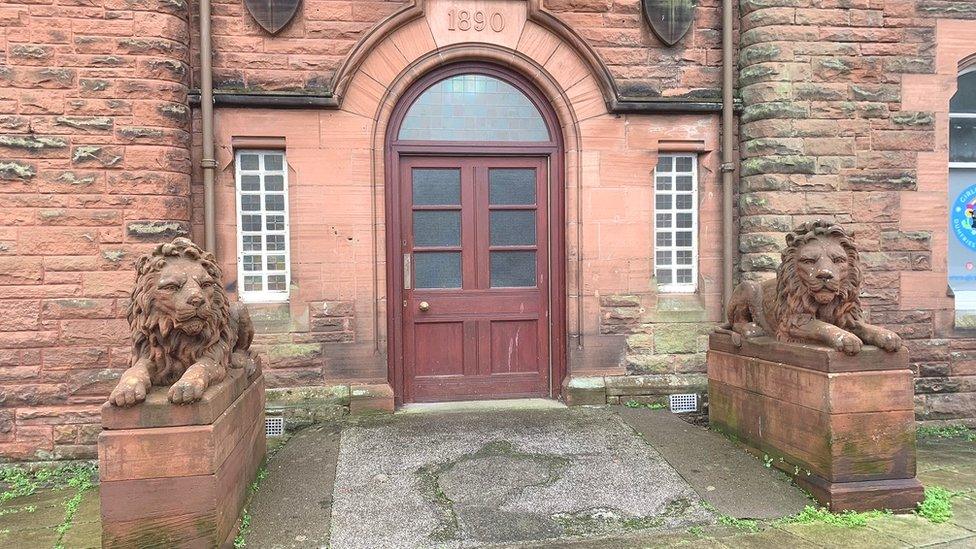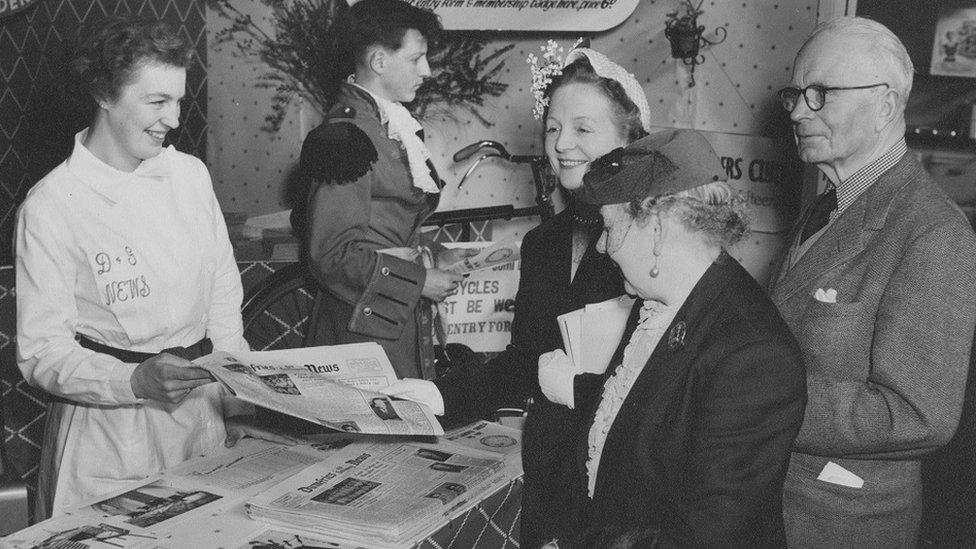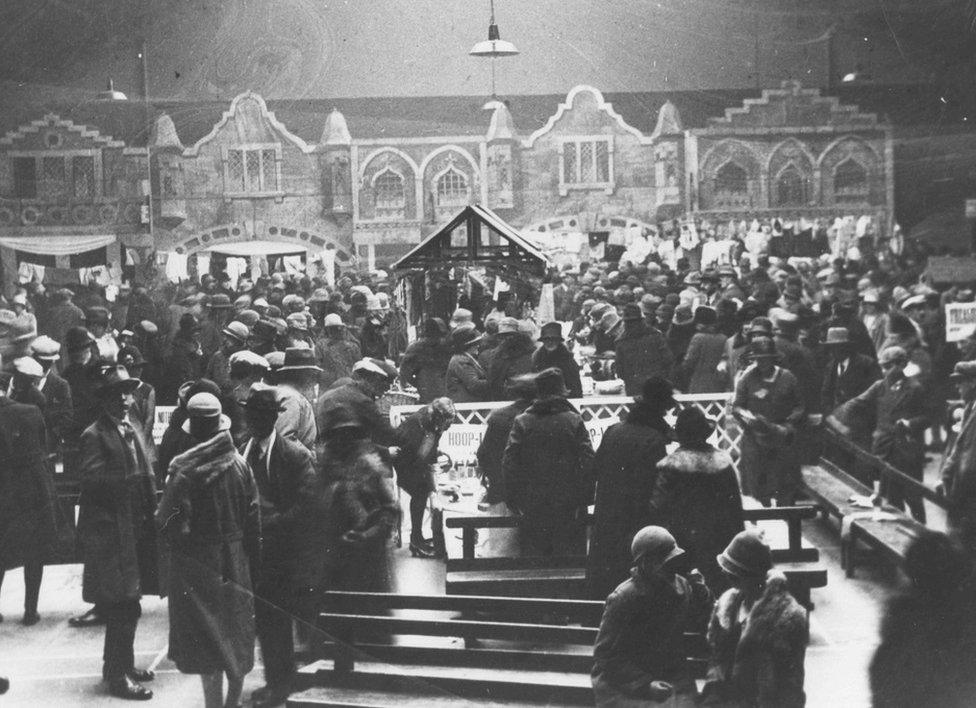Dumfries' old military drill hall's future at a crossroads
- Published

Two striking stone lions guard the front of the 132-year-old hall
In the second half of the 19th Century and early 20th Century nearly 350 of them are estimated to have been built across Scotland.
Drill halls - designed to train military volunteers - sprung up across the country.
Now about half of them remain, with one of their number sitting on Newall Terrace in Dumfries.
Built in 1890, it now faces an uncertain future after serving a wide range of different purposes.
Drill halls were a product of concerns about the British Army being overstretched in the middle of the 19th Century at home and across the Empire.

The hall has hosted a wide range of events down the years like this trades exhibition in the 1950s
One solution was to create volunteer forces to defend the British mainland if needed.
In southern Scotland, the 1st Administrative Battalion Dumfriesshire Rifle Volunteers was formed in 1862.
By the time the town's drill hall was constructed they had been reformed as the 3rd Volunteer Battalion of the King's Own Scottish Borderers.
Their training was not the only purpose of the the building - it was also to be used for flower shows, public meetings and even dog shows.
"Drill halls are an important part of our social and military history," said Historic Environment Scotland in its notes on the B-listed building.
"They tell us much about the development of warfare and the history of defending our country.
"They also, unusually for a nationwide building programme, were not standardised and were often designed by local architects in a variety of styles and they also have a part to play in the history of our communities."

A "grand bazaar" was held at the site during the 1920s
The Loreburn Hall was added to and altered in 1909 and 1967 and has served a wide range of purposes - exhibition space, indoor football site and concert venue among them.
It has two distinctive lions sculpted at either side of the door.
In 1968 it transferred ownership from the Trustees of the Drill Hall to the provost, magistrates and councillors of the Royal Burgh of Dumfries.
Now, Dumfries and Galloway Council faces a decision over the future of the facility which is currently being used as a pop-up cinema by the Electric Theatre Company which runs the Big Burns Supper.

The Loreburn Hall is currently being used as a pop-up cinema and will host the Big Burns Supper in January
It will host its festival there in January but its lease - granted at no cost by the local authority - runs out in March.
The organisation has applied to continue operating in the hall for a further two years.
However, the Drill Hall Initiative has also expressed an interest in taking over the site with plans to use it as an events, art and cultural space.
A review of both bids, though, has found that neither group could be considered eligible for a community asset transfer under current legislation.
The property is surplus to council requirements and has served a number of purposes including to support postal voting in the 2021 elections.
Prior to that the building was a Covid vaccination centre and also a replacement gym when the DG1 leisure centre was forced to shut for repairs.
The hall is on the common good register meaning the council has a legal obligation "to have regard to the interests of the inhabitants of the area" in any sale.
It is now being asked to market the property for sale or rent and invite offers from interested parties.
That means the future use of this remnant of another age remains very much up in the air.